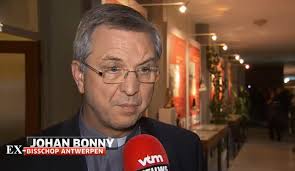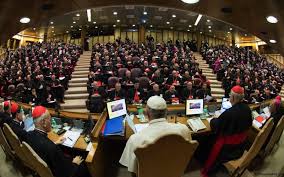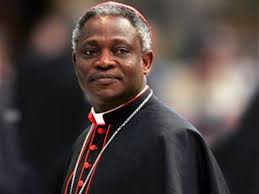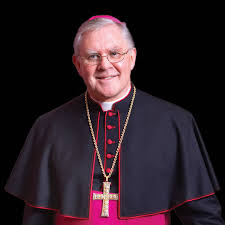[From Austen Ivereigh in Rome] When the final report is read to the synod this afternoon and voted on, and later — it is widely assumed — published together with the voting tallies, it will not contain any specific recommendation on the flagship issue of the divorced and the remarried. But it will open the way for a new overall direction for the Church’s response to the challenge of marriage and family.
Even the German group’s negotiated solution on the sacraments question is too contentious and unproven to be recommended in the text; as Cardinal Oswald Gracias of Bombay, one of the 10-man editing commission, responsible for evaluating and integrating 1, 355 modi (amendments) to the working document, told the National Catholic Reporter: “I don’t think we’re ready as yet. The matter has not been sufficiently analyzed in depth.”
He added: “I don’t think we’re ready yet to have a consensus on this matter, and it would be not good to have the Synod divided on this matter at the moment.”
He was alluding to the strong disagreement throughout the synod over this and other issues, which in turn reflects deeper differences within world’s episcopate, both cultural and theological.
The final document will not attempt to resolve those differences or forge compromises, for that is not its purpose. Its object, as Cardinal Peter Turkson, president of the Vatican’s Justice and Peace Council, told journalists, is “an attempt to capture different viewpoints”; it is the synthesis of a listening exercise, in which the questions will be more clearly expressed than the answers.
This will inevitably be reported as a failure to agree or a failure by Pope Francis to move his bishops. The Guardian has already run a story under the misleading headline, ‘Pope Francis fails to persuade majority of bishops on remarried Catholics’, as if this were an exercise in political persuasion.
The headline also assumes that Pope Francis has made up his mind on the issue. If he has, he has stayed resolutely silent on the matter, only raising it in this synod to warn bishops not to reduce the gathering to this question alone.
What the synod was really about
The synod’s task was not to create doctrine or law or even change practice; it has not failed to find agreement, for that was never its purpose. It was a sounding, an exercise in listening — as well as a reality check. It was an attempt, as at the Second Vatican Council, to bring pastoral realities to bear on church practices and policies, and to live in the tension, listening to where God is calling. The outcome of the synod was always to point to a new direction, to help shift the ground.
In an interview with Le Figaro, Cardinal Christoph Schönborn of Vienna, one of the most significant figures in the college of cardinals, put Pope Francis’s objectives for the synod in these terms:
It’s very simple. He wants us to look at things close up. To have a loving concern for what families are going through. Rather than seeking to resolve this or that particular problem, his intention has been to adopt a gaze full of interest, concern, compassion, and encouragement to take part in the joys and the sufferings of the family. He wants to be grounded in reality, close to life itself. At root he is in the process of leading, along with the whole Catholic Church — and with us, the bishops — a great Ignatian retreat. It’s the Jesuits’ secret! An Ignatian retreat, of St Ignatius of Loyola, the founder of the Jesuits, is none other than looking closely at every situation in order to discern by listening to God and to people. The Pope wants the Church to be close, and to walk with everyone, in order to discern where God is working in every family.
And in that the synod has succeeded. Cardinal Gracias has made that while specific solutions will not be spelled out in the document, the overall direction for the Church will be.
The objective of this synod was to set a new pastoral strategy for the Church, one that will better enable it to meet the challenge posed by the collapse in support by law and culture f0r marriage. The final document will signal that new direction, first by pointing to ways in which the Church can better equip and support people for marriage, second by inserting the Church more clearly in the lives of those whose marriages have failed or who are wounded by the collapse of family life, or who fear to commit.
As Archbishop Mark Coleridge of Brisbane predicts, “there’s likely to be a new creativity and commitment in the way we accompany married couples and families in all their diversity and at every step of their journey. There will also be an attempt to forge a new language – less negative, more in touch with reality, more comprehensible. In part, this will mean a more biblical language.”
Because “words created worlds”, as David Gibson spells out here, a change in this area would in itself lead to a shift in the Church’s outlook, as happened at the Second Vatican Council. It is a change already begun in Pope Francis’s own language — more embracing, more merciful, more reflective of everyday realities — that will be reflected in tonight’s document.
‘The Church has changed’
 In answer to a question last night about what has changed as result of the synod, Cardinal Godfried Danneels, the retired Archbishop of Brussels and a Pope Francis nominee at the synod, said it was the Church itself that had changed. From being seen as doing nothing but “talking and judging”, the Church is now seen to be listening. “I have the feeling that we have passed from ‘I’ to ‘us’,” he said, adding: “The Church is not longer a concrete block. Each country has its ideas and no longer seeks to silence disagreement as it did in the past. The Church is a great ship that is slowly taking another direction.”
In answer to a question last night about what has changed as result of the synod, Cardinal Godfried Danneels, the retired Archbishop of Brussels and a Pope Francis nominee at the synod, said it was the Church itself that had changed. From being seen as doing nothing but “talking and judging”, the Church is now seen to be listening. “I have the feeling that we have passed from ‘I’ to ‘us’,” he said, adding: “The Church is not longer a concrete block. Each country has its ideas and no longer seeks to silence disagreement as it did in the past. The Church is a great ship that is slowly taking another direction.”
Cardinal Danneels was speaking alongside Bishop Johan Bonny of Anvers, who picked out seven major themes from the synod which he believes will find expression in the document:
- The common commitment of the synod to marriage between man and woman, open to children, as the basis of the family, which needed to be supported by both Church and civil society.
- The huge variety of challenges and situations facing the family across the world, which means that the Church’s pastoral response needs to include more differentiation.
- The key theme of much better preparation for and greater support for marriage. Marriage is increasingly a counter-cultural vocation, but how does the Church enable people to live it?
- The overriding theme of mercy, which Pope Francis has made a key theme of his pontificate. A new stress on mercy will be found throughout the final document, showing that the Church seeks to embrace the world in all its brokenness and poverty.
- The tension between doctrine and pastoral life. The synod has deliberately sought to focus on the pastoral, in order not to be distracted by major theoretical discussions. The synod has prioritised praxis over theory, focussing on what can be done in the local Church, and this emphasis will be reflected in the document.
- Marriage and family nowadays contains many more ‘complex realities’ — cohabitation, divorce, same-sex unions — than at the time of the Second Vatican Council or even Familiaris Consortio in 1981. Mixed and interreligious marriages, for example, are now far more common as result of globalization. The synod’s final report will call on the Church to embrace three key words — “listen, integrate, accompany” — in relation to these new complex realities.
- Finally, the synod has been an exercise in communion. Given the vast range of backgrounds and viewpoints, the clashes have not been surprising. But the listening and the walking together have produced great fruits; “the Spirit of the Second Vatican Council is in the text”, Bishop Bonny said.
 Bishop Bonny had clearly been frustrated by his French small group, headed by Cardinal Robert Sarah, where the questions of the divorced or gay people had simply not been a concern. (“In my group there was no way of discussing it in a peaceful way”, he observed).
Bishop Bonny had clearly been frustrated by his French small group, headed by Cardinal Robert Sarah, where the questions of the divorced or gay people had simply not been a concern. (“In my group there was no way of discussing it in a peaceful way”, he observed).
For a minority, this has been a synod too far. As Archbishop Coleridge put it in one of his blog posts:
The feeling at times is that some think this whole Synod process has been a mistake and that the best available option is harm minimisation. At times in the plenary and the small groups, there has been a whiff of fear, even a kind of paranoia, with some determined to ride into battle to “save the Church”. That kind of partisan spirit can turn brothers to enemies. The Spirit of God does the opposite.
That is why, said Bishop Bonny, the synod was right to limit the discussion to pastoral questions; anything else would have put the participants under too much pressure and prevented a free discussion. Instead it had sought “to open the pastoral window”, adding: “That window is open. The synod is a moment; we are in a process.”
Disagreement within unity
 The disagreements in the synod have not been over doctrine, but over whether a shift in approach threatens the Church’s witness to that doctrine. That is why the fissures on issues such as pastoral outreach to the divorced and remarried, or the language to be used about gay unions or cohabitees, have distorted the truth of a deeper unity. On core Catholic doctrines, this synod has been remarkably united — this is, after all, an episcopate appointed mostly by the last two popes, for whom orthodoxy was a precondition of being made a bishop.
The disagreements in the synod have not been over doctrine, but over whether a shift in approach threatens the Church’s witness to that doctrine. That is why the fissures on issues such as pastoral outreach to the divorced and remarried, or the language to be used about gay unions or cohabitees, have distorted the truth of a deeper unity. On core Catholic doctrines, this synod has been remarkably united — this is, after all, an episcopate appointed mostly by the last two popes, for whom orthodoxy was a precondition of being made a bishop.
The problem has not been disagreement on doctrine: there is no disagreement on the vital importance of family, or that a true marriage can only be between a man and a woman, indissoluble, and open to children. The real division, as Cindy Wooden notes, is the same one as at the Second Vatican Council — how the Church relates to the world, and especially to the world that does not conform to church teaching. Should they be lectured, or healed? Do they need clarity, or understanding?
At no time, despite the hysterical fears of lobbies such as Voice of the Family, has anyone ever questioned core church teaching, and the notion that the synod is some kind of plot that is pushing the Church towards schism is no less laughable because it has been put forward by a respected New York Times columnist.
A revolution in two areas
 That is why the story of division and disagreement alone fails to capture the truth of this synod. The real story is how the synod has moved the Church substantially along a new path — one that has the backing of the global episcopate. That new direction will be visible in tonight’s document in two main areas:
That is why the story of division and disagreement alone fails to capture the truth of this synod. The real story is how the synod has moved the Church substantially along a new path — one that has the backing of the global episcopate. That new direction will be visible in tonight’s document in two main areas:
The first is what might be called a ‘revolution in formation’.
Time and again, the synod has underlined the fact that across western society the breakdown in marriage and family requires the Church radically to revise the way it prepares couples for marriage and supports them in their married life. The final document is likely to call both for remote and immediate formation — that is, to build marriage into the education of the young in schools, as well as for couples both entering marriage and in its early years, when there are powerful pressures.
Formation will be needed for seminarians — many of whom, increasingly, are the children of divorce and therefore lack models of stability — as well as for parishes, pastoral agents, teachers, catechists, and so on.
Without stronger families, it has been endlessly noted, the long-term health of society and the Church itself is at risk. This synod signals the Church’s willingness to marshall energies and resources to turn the tide.
The second is new, more engaged and merciful approach to the reality of today’s families.
Divorce, cohabitation, and other effects of family breakdown across the western world — in part because of what the Archbishop of Armagh, Eamon Martin, calls the “tsunami of secularisation”, and in part because of some of the real pressures of globalisation, as Cardinal Turkson said in his speech — are no longer realities that the Church can hope to stave off. In the west, at least, few Catholic families are now immune to the breakdown in marriage and family.
That means that it is not enough to proclaim the Church’s teaching from the rooftops; the Church must be able to come alongside people, to help and heal them.
For all its weaknesses and divisions, its melodramas and at times its chaos, this synod has produced a remarkable fermentation, and its fruits will be lasting.
Pope Francis this week announced a new, powerful Vatican congregation for laity, family and life to take forward this new pastoral strategy.
He will respond in other ways: in the form of a major teaching document, or an apostolic exhortation, or by appointing commissions of experts, or through executive orders (motu propio) as he did with the annulments. In all likelihood, it will be a combination of more than one of these. However he acts, it will be the fruit of his own discernment, of which the synod has been a vital instrument.





